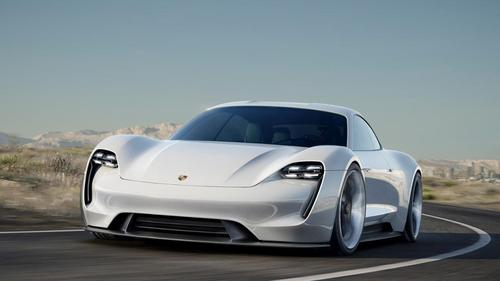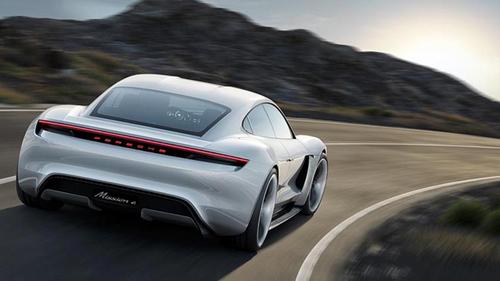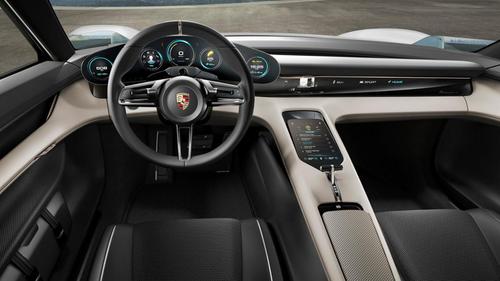Porsche is planning to roll out a 600-HP electric car with an 800V electrical architecture and potentially a charging time of just 15 minutes.
September 17, 2015
Introduced at this week’s Frankfurt Motor Show, the proposed Porsche Mission E four-seater will accelerate from 0-62 mph in 3.5 seconds and offer a battery-powered range of 310 miles. When it reaches production in about five years, it will be Porsche’s first all-electric car.

Porsche’s Mission E, 600-HP electric concept car is powered by two permanent magnet synchronous motors and accelerates from 0-62 mph in just 3.5 seconds. (Source: Porsche GmbH)
In a press release, Porsche said the first-of-a-kind 800V electrical architecture offers multiple advantages -- “shorter charging times and lower weight, because lighter, smaller-gage copper cables are sufficient for energy transport.”
Up to now, no electrified production vehicle has ever used such a high voltage. Nissan’s original Leaf all-electric, for example, operated at a nominal voltage of 365V. Similarly, the Chevy Volt is 360V; Chevy Spark is 370V; Honda Fit is 331V; and Chrysler’s Fiat 500e is 364V. The Toyota Prius PHV plug-in and the Lexus RX 450h hybrid offer two of the highest voltage architectures, at 650V.

Via an 800V port, the Mission E’s battery will charge to 80% capacity in just 15 minutes, which is said to be a record for an electric car. Today’s fastest public-charging stations do not offer 800V capabilities. (Source: Porsche GmbH)
READ MORE ARTICLES ON ELECTRIC VEHICLES:
High-Voltage Hybrids & EVs
Porsche did not reveal how big the Mission E’s battery will be, but it did say that it will be chargeable to 80% capacity in around 15 minutes. The automaker claimed that the charging time would be a new record for an electric vehicle. It added, however, that the car would have to be charged through an 800V port to achieve that time.
Today’s fastest public-charging stations do not offer 800V capabilities. “Currently, that’s more than the existing fast-charge infrastructure,” noted John Kalb, founder of EV Charging Pros, which specializes in helping corporations and workplaces understand EV charging. “But if you maybe doubled the existing fast-charge infrastructure, you could get to that. It’s possible.”

Mission E’s dashboard includes a holographic display and instruments that are operated by eye-tracking and gesture control. (Source: Porsche GmbH)
Home charging systems typically provide 240V AC at 30A. Some DC fast-charge systems use 400V DC. Porsche did not respond to calls from Design News in time for this story, so it’s not known if the automaker is participating in the development of an 800V charging system.
Additional proposed features of the Mission E include a dashboard with a holographic display, instruments that are operated by eye-tracking and gesture control, and virtual exterior mirrors.

We’re heading to Philly and Houston! Design & Manufacturing Philadelphia will take place Oct. 7-8, while Design & Manufacturing Texas will be in Houston Oct. 13-14. Get up close with the latest design and manufacturing technologies, meet qualified suppliers for your applications, and expand your network. Learn from experts at educational conferences and specialty events. Register today for our premier industry showcases in Philadelphia and Texas!
Senior technical editor Chuck Murray has been writing about technology for 31 years. He joined Design News in 1987, and has covered electronics, automation, fluid power, and autos.
About the Author(s)
You May Also Like



